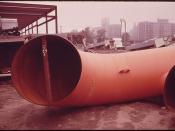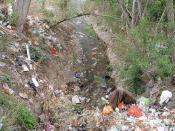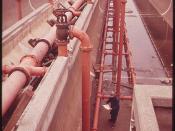The survival of humanity greatly depends on the availability of clean water. Humanity has polluted this valuable resource for centuries, and it is past time to right this wrong. Several sources of this pollution are partially treated and untreated sewage, disease-causing bacteria from health facilities, organic and inorganic compounds, radioactive substances and sediment pollution. These pollutants affect both surface and ground waters that are used for the survival of humankind. One can see surface waters and might be able to see the pollution of these waters. Ground waters are unseen and mostly forgotten about, taken for granted and assumed to be always useable by the public. Ground water pollution and pollution abatement plans are discussed in this essay.
Where does our water come from? Three main sources of water are surface water, water runoff and groundwater. Surface water is water from precipitation that does not seep down through the soil after a rain event.
Water runoff is the movement of water to a receiving stream that results from precipitation or snowfall. Groundwater is the water supply that is naturally stored in underground aquifers. Aquifers are similar to a lake, but they located under the earth's surface. It appears there is an endless supply of water for everyone but this appearance is misleading. Who would think that simply building a house or paving a driveway would have an adverse effect on the supply of available water? Urbanization is defined as the process by which cities grow and cities usually grow by using the available land and placing buildings and parking areas on them.
Urbanization has a two-sided effect on available water sources. Urbanization greatly reduces groundwater replenishment due to increased surface runoff. In turn, the increased surface runoff greatly increases the availability of surface waters for human consumption. A downside to...


